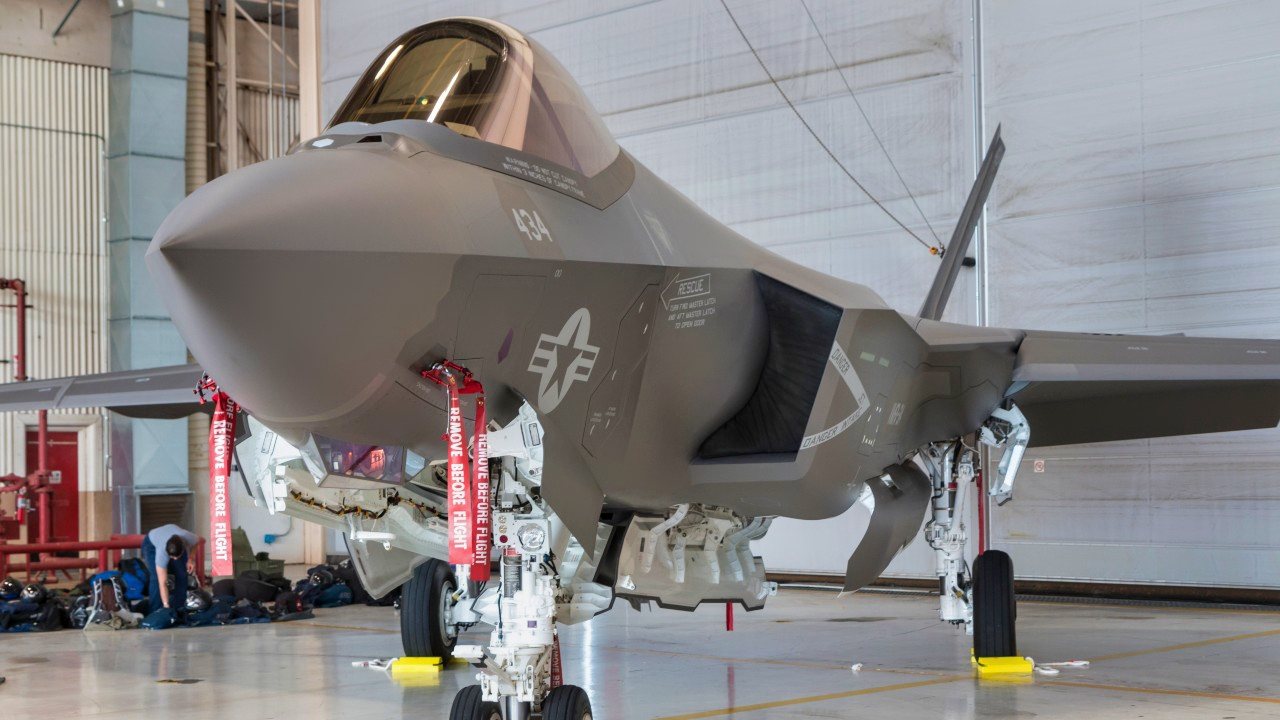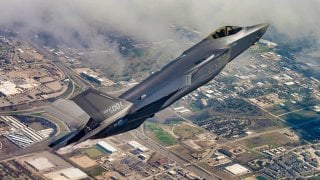From World Wars to Stealth Fighters: No. 80 Squadron's New Role in F-35 Security
The unit went inactive in 1969 before reforming this year, while the RAAF’s No. 80 Squadron began in 1943 during World War II and was deactivated in 1946.
Summary: At Eglin Air Force Base, Florida, the Royal Air Force (RAF) and Royal Australian Air Force (RAAF) recently reactivated No. 80 Squadron, a historic unit with roots in World War I and II. The reformed squadron will focus on mission data file programming for F-35 variants used by Australia, Canada, and the UK, enhancing their capabilities in electronic warfare. The unit comprises a blend of aircrew, engineers, technicians, and intelligence analysts from the RAF and Royal Navy. The reactivation ceremony underscored the unit's significance and its reliance on international collaboration, especially with U.S. support at Eglin.
RAF and RAAF Join Forces in Reactivating No. 80 Squadron for F-35 Data Mission
At a ceremony at Eglin Air Force Base (AFB), Florida, earlier this month the Royal Air Force (RAF) and Royal Australian Air Force (RAAF) reactivated their former unit, No. 80 Squadron—a unit that was initially raised during World War I.
The unit went inactive in 1969 before reforming this year, while the RAAF’s No. 80 Squadron began in 1943 during World War II and was deactivated in 1946. The name is now active again seventy-eight years later—and it will be among the international partners collaborating on the Lockheed Martin F-35 data mission at Eglin.
During a ceremony at Elgin, the RAF’s chief of the Air Staff, Sir Rich Knighton, and the RAAF’s chief of the Air Force, Air Marshal Robert Chipman, formally awarded the dormant 80 Squadron numberplates.
The new RAF/RAAF 80 Squadron’s mission is to provide mission data file programming for the Australian, Canadian, and United Kingdom F-35 variants. Mission data is information across the electronic landscape that allows the aircraft and aircrew to sense, identify, locate, and counter threats in the electromagnetic spectrum. The unit is an Air & Space Warfare Centre Squadron and is made of aircrew, engineers, technicians, and intelligence analysts, drawn from both the RAF and Royal Navy.
“Our success as a squadron isn’t possible without the unwavering support of the U.S. and the plethora of Eglin stakeholders, who will continue to support the squadron and its outstanding capability,” said Cdr. Chris Wilcox, No. 80 Squadron commander.
“[This] marks a significant milestone as we come together to commemorate the reforming of not one, but two No. 80 Squadrons at Eglin,” added Air Marshal Robert Chipman, RAAF chief of Air Force. “The decision to transition the Australia, Canada, and United Kingdom F-35 Reprogramming Laboratory into a squadron holds profound importance. It signifies that the people and the work they do is operationally relevant; it fosters unit identity and pride among our aviators.”
Before the F-35—Sopwith Camels to Spitfires
Founded on August 1, 1917, at Montrose Aerodrome and equipped with the Sopwith Camel, the Royal Flying Corps (RFC) No. 80 Squadron was sent to France to serve on the Western Front in January 1918. It first acted as a fighter squadron, but was soon reallocated to a ground-attack role, and continued that duty until the end of the war.
Reformed for service in World War II with the RAF, No. 80 Squadron took part in the Battle of El Alamein and provided air support for the Operation Overlord D-Day landings, and later was employed in the Operation Diver countermeasures against the German V-1 rockets. During World War II, it first operated the Gloster Gauntlet fighter, replaced by the Gloster Gladiator, while it later employed the Hawker Hurricane, Supermarine Spitfire, and Hawker Tempest. In its post-WWII service, the RAF’s No. 80 Squadron also operated the de Havilland Hornet and the English Electric Canberra.

The RAAF’s No. 80 Squadron, which saw service in the New Guinea and Borneo Campaigns, employed the P-40 Kittyhawk.
Author Experience and Expertise: Peter Suciu
Peter Suciu is a Michigan-based writer. He has contributed to more than four dozen magazines, newspapers, and websites with over 3,200 published pieces over a twenty-year career in journalism. He regularly writes about military hardware, firearms history, cybersecurity, politics, and international affairs. Peter is also a Contributing Writer for Forbes and Clearance Jobs. You can follow him on Twitter: @PeterSuciu.
You can email the author: [email protected].
All images are Creative Commons.


